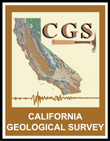
|
California Division of Mines
Special Report 68 Igneous and Metamorphic Rocks of the Western Portion of Joshua Tree National Monument, Riverside and San Bernardino Counties, California |
PREVIOUS WORK
Geologic studies in the area covered by the present paper were previously made by W. J. Miller (1938). Miller delineated the formations exposed in the portion of the Monument south of Twentynine Palms and named all of the major rock units in the area. A summary of the crystalline rocks of southern California is given by Miller (1946).
Harder (1912) studied the iron ores of the Eagle Mountains, about 20 miles southeast of the area covered in the present report. Evidence presented in his paper indicated that the dominant events in the evolution of the crystalline rocks in the Eagle Mountains were: first, sedimentation; second, intrusion of porphyritic granite; third, dynamic metamorphism of both granite and sediments; and fourth, intrusion of quartz monzonite.
Vaughan (1922) reported principally on the San Bernardino Mountains, about 25 miles west of the western edge of Joshua Tree National Monument. The major events in the development of the crystalline rocks of this area were: first, the formation of Precambrian schists and granites; second, intrusion of a granitic rock best dated as post-Carboniferous; and third, the intrusion of the Cactus granite of probable Jurassic age.
Maclellan (1936) has studied an area largely south of Joshua Tree National Monument in the Little San Bernardino Mountains. The geologic history of the area is: first, metamorphism of sediments to form the Berdoo series; second, greater metamorphism and migmatization of part of the Berdoo series to form the Thermal Canyon series; and third, intrusion of the Fargo granite. The Berdoo series is probably correlative with the Pinto gneiss discussed in this report, but although the Pinto gneiss is locally migmatized, the area studied by the writer apparently does not contain any large, mappable bodies of rock similar to those delineated as the Thermal Canyon series. Descriptions of the Fargo granite indicate that it is probably correlative with the White Tank quartz monzonite described in this report.
Although the writer has concluded that the Pinto gneiss is the oldest formation in the area and consists almost entirely of metasediments or metavolcanics, Miller (1938) showed evidence that much of the gneiss was derived from plutonic igneous and meta-igneous material. With this exception, the chronologies indicated by Miller and the writer for the formation of the crystalline rocks in the area appear to be identical. Essentially the sequence consists of an early period of igneous and metamorphic activity followed by the intrusion of the White Tank quartz monzonite.
Thus, the general history of the crystalline rocks in the area around Joshua Tree National Monument is one of relatively recent (probably Jurassic) intrusion of quartz monzonite into an igneous-metamorphic complex. There is some indication of a period of igneous activity between the formation of the igneous-metamorphic complex and the intrusion of the quartz monzonite, but there is no evidence as to its exact age. Although the writer is not convinced that any of the periods of magmatic intrusion have been followed by large-scale metamorphism, it must be admitted that several investigators have reported the metamorphism of plutonic igneous rocks as part of the history of the region.
A more detailed map of the area just south of Twentynine Palms and a very brief summary of the geology of the area has already been published by the writer (Rogers, 1954).
| <<< Previous | <<< Contents >>> | Next >>> |
ca/cdm-sr-68/sec1.htm
Last Updated: 18-Jan-2007